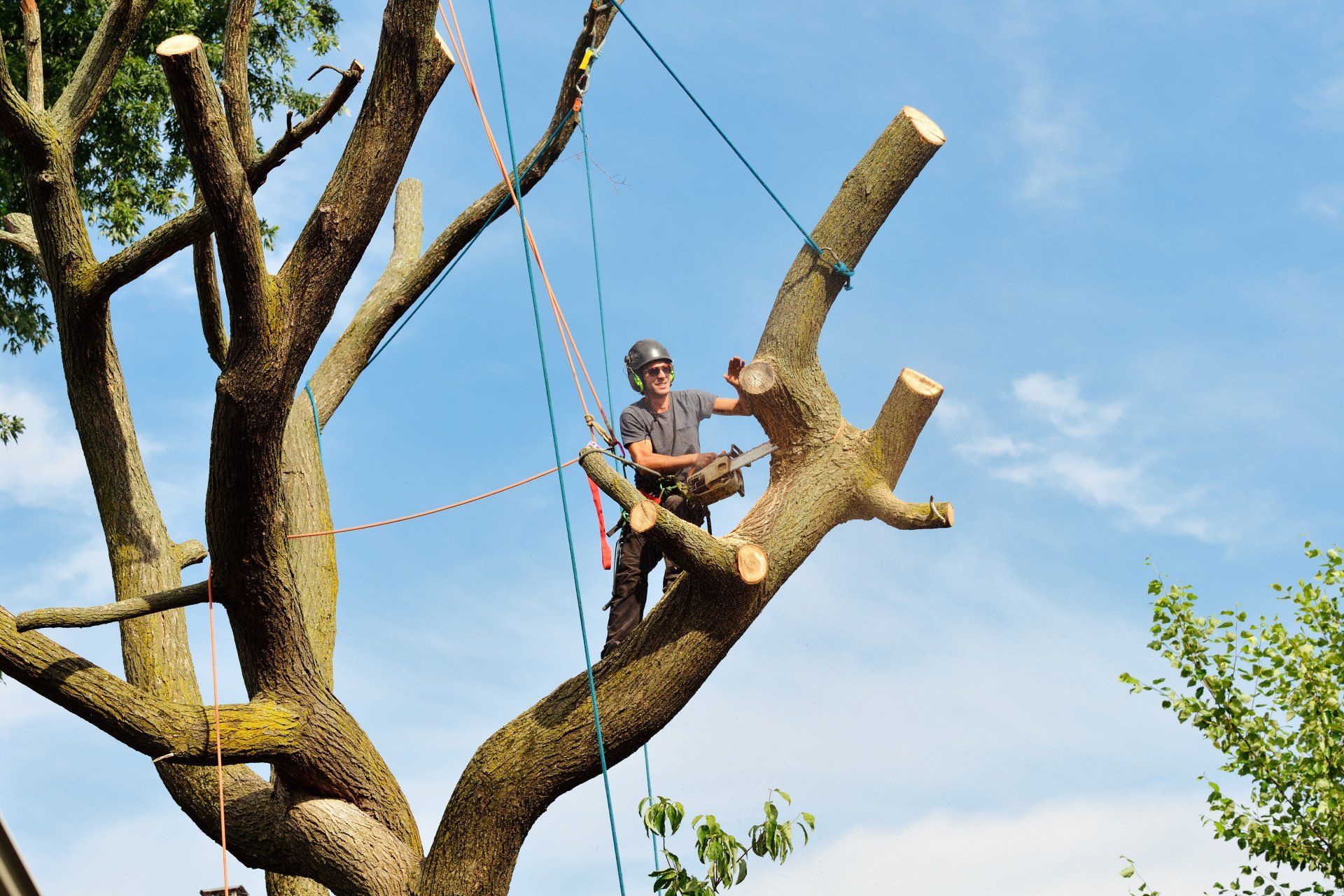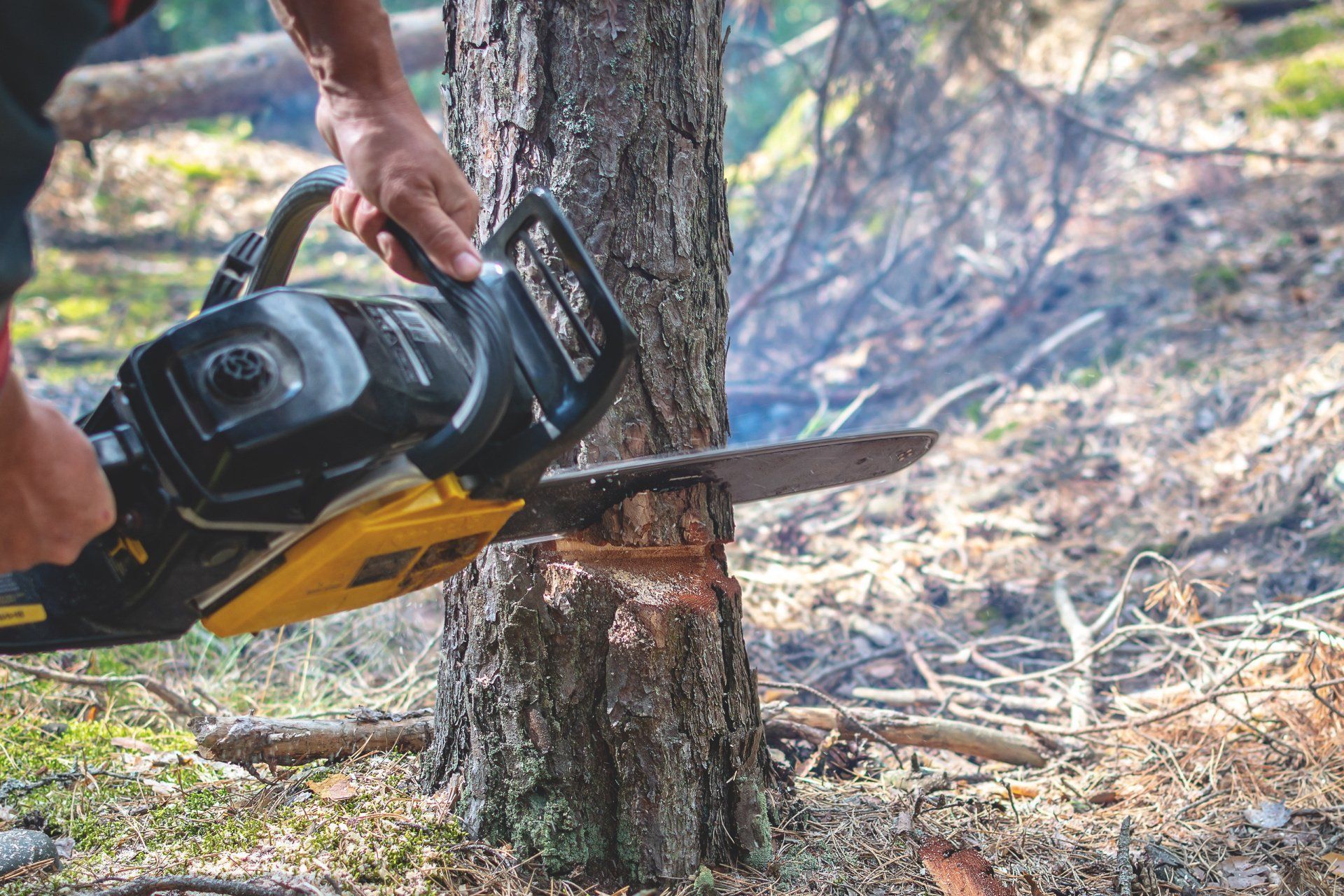Tree Removal Services
Understanding the Tree Removal Process for the St. Cloud Area
The removal process of a tree involves several critical and carefully coordinated steps to ensure efficiency and safety:
1. Assessment: Initially, our professionals in St. Cloud evaluate the tree’s overall condition, assessing its health, size, and specific characteristics. They also consider the surrounding environment—looking at nearby structures, power lines, and other vegetation—to determine the most effective approach to the removal.
2. Planning: Following the assessment, a detailed plan is meticulously formulated. This plan not only prioritizes the safety of the workers but also aims to minimize any potential impact on nearby structures and landscape features, ensuring that everything is taken into account before proceeding.
3. Preparation: The preparation stage involves clearing the surrounding area of any obstacles that may hinder the removal process. This includes removing furniture, garden decorations, or any other potential hazards. Additionally, all necessary equipment, such as chainsaws, ropes, and safety gear, is gathered and inspected to ensure readiness for the job ahead.
4. Cutting: During the cutting phase, the tree is carefully dismantled piece by piece. If deemed necessary, the process starts from the top, with branches being cut away first to ensure controlled and safe descent. This careful technique ensures that the tree can be managed without risking damage to the environment or nearby structures.
5. Removal of Debris: Once the tree has been successfully cut down, it is chopped into manageable pieces. These pieces are then thoroughly removed from the site, ensuring that the area is left clean and free from any hazardous debris that could pose a danger to the surrounding St. Cloud community.
6.
Stump Grinding: In some cases, additional work may involve grinding the remaining stump. This step is important to prevent any potential regrowth and to create a smooth, level surface where the tree once stood, allowing for future landscaping possibilities.
Get a free quote
Contact Us
Thank you for contacting us!
We will get back to you as soon as possible.
Please try again later.
Recognizing a Safety Hazard and When a Tree Should be Removed
Several indicators can signal that a tree needs to be removed for safety and health reasons, as it's crucial to address such issues promptly to prevent further complications in the St. Cloud environment.
- Disease Signs: One of the most alarming indicators is the presence of fungal growth on the bark or the base of the tree, which can suggest a severe disease affecting the tree's overall health. Additionally, dead or dying branches that are noticeably more prevalent than healthy ones can point to serious underlying health issues that may compromise the tree's vitality. Furthermore, a significant loss of leaves during the growing season can also be a red flag, indicating that the tree is struggling to thrive and could be at risk of further decline over time.
- Structural Integrity: Another critical factor to monitor is the tree's structural integrity. Observing cracks or deep splits in the trunk can be a sign of internal decay or weakness, which can ultimately compromise the tree's strength. Moreover, if you notice significant leaning, it may suggest that the tree is off balance and could potentially fail or collapse. This poses a substantial risk not only to the tree itself but also to nearby structures, vehicles, and individuals who may be in close proximity. It is essential to assess these warning signs carefully for the safety of everyone involved.
Several indicators can signal that a tree needs to be removed for safety and health reasons, as it's crucial to address such issues promptly to prevent further complications in the St. Cloud environment.
- Disease Signs: One of the most alarming indicators is the presence of fungal growth on the bark or the base of the tree, which can suggest a severe disease affecting the tree's overall health. Additionally, dead or dying branches that are noticeably more prevalent than healthy ones can point to serious underlying health issues that may compromise the tree's vitality. Furthermore, a significant loss of leaves during the growing season can also be a red flag, indicating that the tree is struggling to thrive and could be at risk of further decline over time.
- Structural Integrity: Another critical factor to monitor is the tree's structural integrity. Observing cracks or deep splits in the trunk can be a sign of internal decay or weakness, which can ultimately compromise the tree's strength. Moreover, if you notice significant leaning, it may suggest that the tree is off balance and could potentially fail or collapse. This poses a substantial risk not only to the tree itself but also to nearby structures, vehicles, and individuals who may be in close proximity. It is essential to assess these warning signs carefully for the safety of everyone involved.
- Pest Infestation: The presence of insects or decay within a tree can seriously compromise not only its health but also its overall integrity, potentially creating hazardous conditions for anyone nearby. These infestations can weaken the tree's structure over time, degrading its resilience and ultimately leading to an increased risk of branches breaking off unexpectedly or even the entire tree falling. When a tree is compromised by pests, it becomes a looming threat that can endanger people, pets, and surrounding property.
- Location Concerns: Trees that are situated too closely to structures, including houses, sheds, or power lines, pose significant risks, especially during St. Cloud's inclement weather such as storms or high winds. In these situations, the likelihood of branches snapping off or the tree itself toppling over increases substantially, creating the potential for serious damage to property or, more alarmingly, posing a threat to human lives. The proximity of these trees to important structures necessitates careful monitoring and, if needed, proactive measures to mitigate the risks associated with their location.
- Environmental Factors: Changes in soil erosion or moisture levels can significantly destabilize a tree's roots, which are vital for providing the necessary support it needs to thrive. When the ground surrounding a tree becomes compromised due to erosion or fluctuating moisture levels, the tree may struggle to maintain its upright position, making it increasingly susceptible to falling during adverse weather conditions. In essence, the health of a tree is intricately tied to the stability of its environment, and any negative changes can jeopardize its survival and safety.
By carefully assessing these various factors, homeowners can make more informed decisions about whether tree removal is necessary to ensure safety and preserve the overall well-being of their property and surrounding landscape. Contact our tree service professionals in St. Cloud for a free evaluation.
- Pest Infestation: The presence of insects or decay within a tree can seriously compromise not only its health but also its overall integrity, potentially creating hazardous conditions for anyone nearby. These infestations can weaken the tree's structure over time, degrading its resilience and ultimately leading to an increased risk of branches breaking off unexpectedly or even the entire tree falling. When a tree is compromised by pests, it becomes a looming threat that can endanger people, pets, and surrounding property.
- Location Concerns: Trees that are situated too closely to structures, including houses, sheds, or power lines, pose significant risks, especially during St. Cloud's inclement weather such as storms or high winds. In these situations, the likelihood of branches snapping off or the tree itself toppling over increases substantially, creating the potential for serious damage to property or, more alarmingly, posing a threat to human lives. The proximity of these trees to important structures necessitates careful monitoring and, if needed, proactive measures to mitigate the risks associated with their location.
- Environmental Factors: Changes in soil erosion or moisture levels can significantly destabilize a tree's roots, which are vital for providing the necessary support it needs to thrive. When the ground surrounding a tree becomes compromised due to erosion or fluctuating moisture levels, the tree may struggle to maintain its upright position, making it increasingly susceptible to falling during adverse weather conditions. In essence, the health of a tree is intricately tied to the stability of its environment, and any negative changes can jeopardize its survival and safety.
By carefully assessing these various factors, homeowners can make more informed decisions about whether tree removal is necessary to ensure safety and preserve the overall well-being of their property and surrounding landscape. Contact our tree service professionals in St. Cloud for a free evaluation.
Emergency Tree Removal?
We're Just a Call Away - Contact Us 24/7!
What to do Immediately after Removing a Tree
After a tree has been removed, certain actions are necessary in St. Cloud to ensure the area is properly managed. This includes immediate cleanup, caring for any surrounding plants, and rehabilitating the soil for future growth.
Immediate Actions Post-Removal
Right after tree removal, the first task is to clear the area of debris. This includes removing wood chips, branches, and the stump if it hasn't been taken out. Leave no hazardous materials that could pose a risk. Next, assess the site for any damage. Look for signs of soil compaction or disturbance. Addressing these issues right away helps maintain the integrity of your landscape. If a stump was not removed, consider methods for removal or treatment. Options include chemical stump removers that accelerate decay or hiring professionals for complete extraction.
Caring for the Surrounding Vegetation
The area surrounding the removed tree may be stressed or damaged. Monitor the health of nearby plants and shrubs, as they could be impacted by the removal process. Watering these plants regularly is important. Adequate hydration supports their survival and encourages new growth. Apply mulch to retain moisture and suppress weeds. Keep an eye out for pests that may have been hiding in the dead wood. If necessary, treat any infestations promptly to prevent damage to healthy plants.
Soil Rehabilitation and Monitoring
Soil quality can be affected after a tree is taken down. To improve soil health, aerate the area if it appears compacted. This enhances nutrient absorption and drainage. Consider adding organic matter, such as compost, to enrich the soil. This boosts microbial activity and promotes healthy growth for future planting. Regular monitoring is crucial. Check soil moisture levels and watch for signs of erosion or nutrient depletion. Establishing a maintenance routine will ensure that the landscape flourishes after removal.
Nature's Symphony
Professional Care. Affordable Service.
Location
Call
Location
Call
All Rights Reserved | St. Cloud Tree Service | Powered by Snapps



